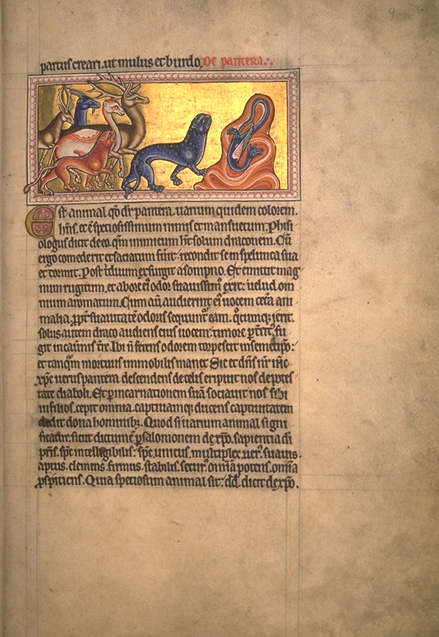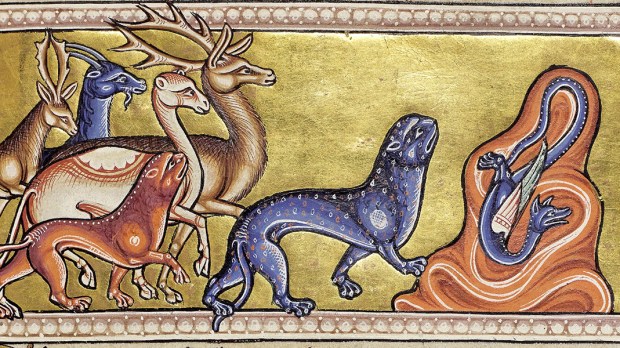It is well known that not only biblical sources inform Christian iconography. Many old legends were compiled in the Physiologus, a didactic Christian text written or compiled in Greek by an unknown author, consisting of descriptions of animals, birds, and fantastic creatures, sometimes stones and plants, provided with moral content, and dated somewhere around the end of the 2nd or 3rd century.
In fact, the Physiologus became quite popular during the Middle Ages, as it included commentaries from Aristotle and Pliny the Elder on zoology. It served as a primary source for the work of later writers, such as St. Isidore of Seville and St. Ambrose, who would then associate certain moral virtues (and vices, of course) with various animals, based on references in Scripture, tradition and other literary sources.

The Aberdeen Bestiary is probably the most beautiful medieval bestiary of them all. Written and illuminated in England around the year 1200, and leaning heavily on animal descriptions included in the Physiologus, it is encrusted with gold leaf and its illuminations are exceptionally rich in detail. In it, we find an interesting description of the panther, which might explain why, in Christian iconography, this feline is surprisingly associated with Christ:
There is an animal called the panther, multi-colored, very beautiful and extremely gentle. Physiologus says of it, that it has only the dragon as an enemy. When it has fed and is full, it hides in its den and sleeps. After three days it awakes from its sleep and gives a great roar, and from its mouth comes a very sweet odor, as if it were a mixture of every perfume. When other animals hear its voice, they follow wherever it goes, because of the sweetness of its scent. Only the dragon, hearing its voice, is seized by fear and flees into the caves beneath the earth. There, unable to bear the scent, it grows numbed within itself and remains motionless, as if dead. Thus our Lord Jesus Christ, the true panther, descending from Heaven, snatched us from the power of the devil. And, through his incarnation, he united us to him as sons, taking everything, and “leading captivity captive, gave gifts to men” (Ephesians, 4:8). The fact that the panther is a multi-colored animal, signifies Christ, who is as Solomon said the wisdom of God the Father, an understanding spirit, a unique spirit, manifold, true, agreeable, fitting, compassionate, strong, steadfast, serene, all-powerful, all-seeing.

